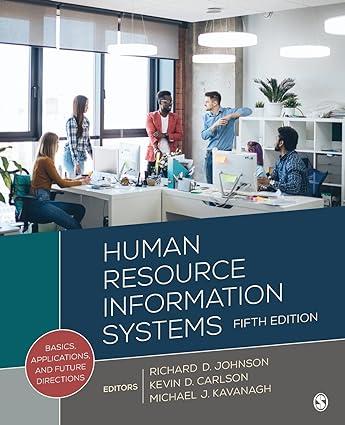Established in 2009, Uber provides an alternative to taxicab service in 460 cities and nearly 60 countries
Question:
Established in 2009, Uber provides an alternative to taxicab service in 460 cities and nearly 60 countries worldwide. The trick? Their mobile application for smartphones allows riders to arrange for transportation with drivers who operate their personal vehicles. A dual rating system (drivers and customers rate each other) serves as a quality control device keeping Uber standards high.(1)
As an international technology firm, Uber has been challenged, along with other tech giants like Google and Twitter, to demonstrate that they are attuned to the specific needs of their employees, more specifically people of color and women. In Uber’s own words, At Uber, we want to create a workplace that is inclusive and reflects the diversity of the cities we serve: where everyone can be their authentic self, and where that authenticity is celebrated as a strength. By creating an environment where people from every background can thrive, we’ll make Uber a better company—not just for our employees but for our customers, too.(2)
Yet actions speak louder than words. Uber employees describe the firm’s work environment amid some managers as Machiavellian and merciless. Many blame Travis Kalanick, Uber’s founder and former chief executive, for establishing such a negative culture. Uber’s fast-growth approach to the market has rewarded employees and managers who have aggressively pushed for greater revenues and fatter profits at the seeming cost of human dignity.
For example, Uber has had its share of troubles addressing issues of sexual misconduct and workforce diversity. These issues came to light when a former employee, Susan Fowler, reported in her personal blog that she was being sexually harassed by her manager and that human resources had been informed of these infractions. (3) Susan Fowler said in her blog, On my first official day rotating on the team, my new manager sent me a string of messages over company chat. He was in an open relationship, he said, and his girlfriend was having an easy time finding new partners but he wasn’t. He was trying to stay out of trouble at work, he said, but he couldn’t help getting in trouble, because he was looking for women to have sex with. It was clear that he was trying to get me to have sex with him, and it was so clearly out of line that I immediately took screenshots of these chat messages and reported him to HR................
Questions
1. Susan Fowler’s complaint of being the target of sexual harassment by her manager would be categorized as falling under which employment law?
2. Which type(s) of harassment was Ms. Fowler exposed to?
3. What actions, if any, has Uber taken to limit their liability relative to sexual harassment charges?
4. Uber’s diversity report indicates that 36% of Uber’s workforce is made up of women (15% in technical jobs);
50% of Uber’s employees in the United States are white, while 9% are Black and 6% are Hispanic. Are they in violation of any EEOC and affirmative action laws?
5. Why does diversity matter in general and more specifically to Uber?
6. What benefits and challenges does Uber derive from a more diverse workforce?
Step by Step Answer:

Human Resource Information Systems
ISBN: 9781544396743
5th Edition
Authors: Richard D. Johnson, Kevin D. Carlson, Michael J. Kavanagh





